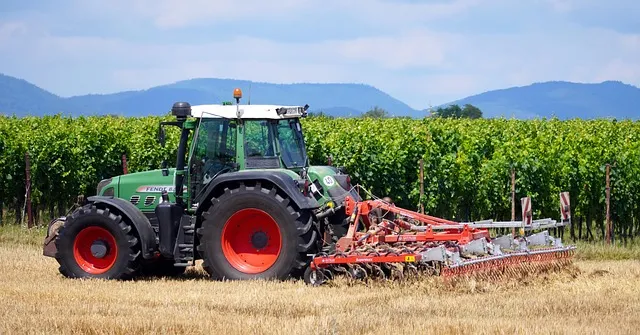Farm equipment leasing is a super smart way for American farmers to get the tools they need without breaking the bank. It’s like renting a bike instead of buying one—you use it when you need it and skip the big costs of owning. This guide will explain everything about leasing farm equipment in a way that’s easy to read—even for a middle schooler! We’ll cover what it is, why it’s awesome, what to think about, and even some real farmer stories. Let’s dive in!
Farm Equipment Leasing Overview
Farm equipment leasing lets you “borrow” tools like tractors or harvesters for a while instead of buying them. You pay a little each month or year, and when you’re done, you can return the gear or get something new. It’s a big deal for U.S. farmers because it saves money, gets you cool new equipment, and makes farming easier—whether you’ve got a tiny veggie patch or a giant wheat field!
1. Understanding Farm Equipment Leasing
What Is Farm Equipment Leasing?
Leasing is when you rent farm equipment from a company for a set time, usually 1 to 5 years. You make regular payments, and at the end, you decide: give it back, buy it, or trade it for something else. It’s an easy way to use big tools without owning them forever.
Types of Equipment You Can Lease
You can lease all sorts of farm gear, like:
- Tractors: Big ones for huge fields or small ones for orchards.
- Harvesters: Machines that grab crops like corn or wheat.
- Irrigation Systems: Smart tools to water your plants.
- Drones: Flying gadgets to check on your crops from above!
2. Benefits of Leasing Farm Equipment
Cost Savings
Leasing doesn’t make you pay a ton of money all at once. Instead, you pay a little each month, which keeps your cash flowing smoothly. The Farm Bureau says leasing can save you 20-30% compared to buying—pretty sweet, right?
Using Modern Technology
With leasing, you get the newest equipment—like a shiny tractor with all the latest tricks. You don’t have to worry about selling old stuff to upgrade; just lease the next cool thing!
Maintenance and Support
Most leases include repairs and upkeep. If your harvester breaks, the leasing company fixes it—no stress for you! This makes farming way more reliable.
3. Things to Think About Before Leasing
Assess Your Farm’s Needs
Think about what your farm really needs. A small farm might just want a little tractor, but a big one might need a giant harvester. Pick equipment that matches your crops and land size.
Lease Terms and Conditions
Check the lease details: How long will you have it? When do payments happen? Can you buy it later? Make sure it fits your budget and plans so there are no surprises.
Financial Impact
Leasing can save you money on taxes—those payments might count as business expenses. Talk to an accountant to see how it helps your wallet!
4. How to Lease Farm Equipment
Find a Reputable Leasing Company
Look for companies farmers trust. Ask buddies or check online reviews to find a good deal.
Application Process
To lease, you fill out some forms and show your farm’s money details. It might take a week or two to get approved—it’s like applying for a loan, but simpler.
Negotiate Your Lease Agreement
Don’t be afraid to ask for better prices or perks, like free delivery. Read every word of the contract so you know exactly what you’re signing up for.
5. Alternatives to Leasing
Buying Equipment
Owning gear means it’s yours forever, but it costs a lot upfront and you handle repairs. It’s great if you’ll use it for years.
Equipment Sharing and Cooperatives
Some farmers share tools with neighbors—like a tool library! It’s cheap but needs teamwork and planning.
6. Financial Assistance and Incentives
Government Programs
The U.S. government has cool stuff like USDA programs (check out EQIP!) that give grants or loans to help with equipment costs.
Tax Considerations
Leasing payments might lower your taxes since they’re often deductible. A tax expert can help you save even more.
7. Case Studies
Success Story
In 2023, a small Iowa farmer leased a $100,000 combine for just $1,500 a month. They saved a bunch upfront and grew 15% more crops with the fancy new machine!
Lesson Learned
A Texas farmer didn’t read the lease end rules and had to pay extra to return their gear. Tip: Always check the fine print!
Conclusion
Key Points Summary
Leasing farm equipment saves money, gets you the latest tools, and includes maintenance. Think about your farm’s needs, check lease terms, and look into tax perks to make it work for you.
Final Advice
Leasing isn’t for everyone, but it’s a fantastic option to explore. It could make your farm run smoother and save you cash—worth a try!

